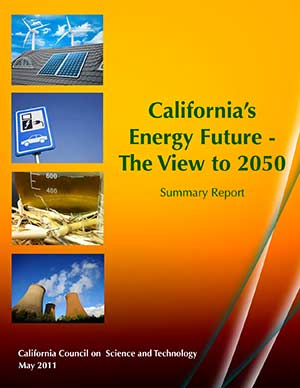California’s Energy Future – Electricity from Renewable Energy and Fossil Fuels with CCS
Author(s): Greenblatt, Jeffrey; Long, Jane C.S.; Hannegan, Bryan
Release Date: April 12, 2012 | Last Updated Date: February 17, 2015
Abstract
This study is part of the California’s Energy Future (CEF) project, which was undertaken to help inform California state and local governments of the scale and timing of decisions that must be made in order to achieve the state’s goals of significantly reducing total greenhouse gas emissions over the next four decades. California’s Global Warming Solutions Act of 2006 (AB32) and Executive Order S-3-05 set strict standards for the state to meet. In order to comply, California needs to reduce its greenhouse gas emissions to 80% below 1990 levels by 2050 while accommodating projected growth in its economy and population. This will likely require a doubling of electricity production with nearly zero emissions. Renewable energy and CCS could be important components of a strategy for meeting these standards. This report is a summary of the realistic potential of these technologies for California and presents an analysis of technological readiness, resources, issues of intermittency, and emissions.







